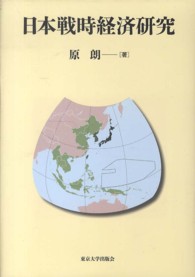- ホーム
- > 洋書
- > ドイツ書
- > Humanities, Arts & Music
- > History
- > antiquity
Description
(Text)
(Short description)
This book deals with the apse as a showcase for images in the early Christian and early Byzantine periods. Two opposed traditions, harking back to early imperial times, nourished the invention of the Christian apse image: on the one hand there were statues in apses of pagan temples and imperial cult rooms which were venerated during cult ceremonies, on the other hand, there were apse mosaics in nymphaea where aquatic myths and figures celebrated the amenities of water. Christian apse mosaics originated within this context and in spite of the Old Testament prohibition of the image. Mosaics and frescoes in apses of cult rooms generated very particular effects, evoking in the viewer respect, admiration, awe and maybe even veneration. The capacity of the image to have an impact on the viewer could not be decreed by the Church, but this was an affair manifested more or less casually according to the inventive power of the artist. This book explores the interactions between the variousimage-media during the early Christian and early Byzantine periods; it particularly investigates the participation of the viewer and of the patron.image-media during the early Christian and early Byzantine periods; it particularly investigates the participation of the viewer and of the patron.
(Review)
. - An important contribution to the study of early-Christian art."
In: International Review of Biblical Studies. 56 (2009) 10. No 2057.
------------------------------------
"Kniha je uzitecným vstupem do problematiky rane krestanské ikonografie (...)."
[Das Buch ist ein nützlicher Beitrag in die Probleme der frühchristlichen Ikonographie (...).]
PhDr. Peter Kovác
In: Stavitelé Katedrál
April 2011)








